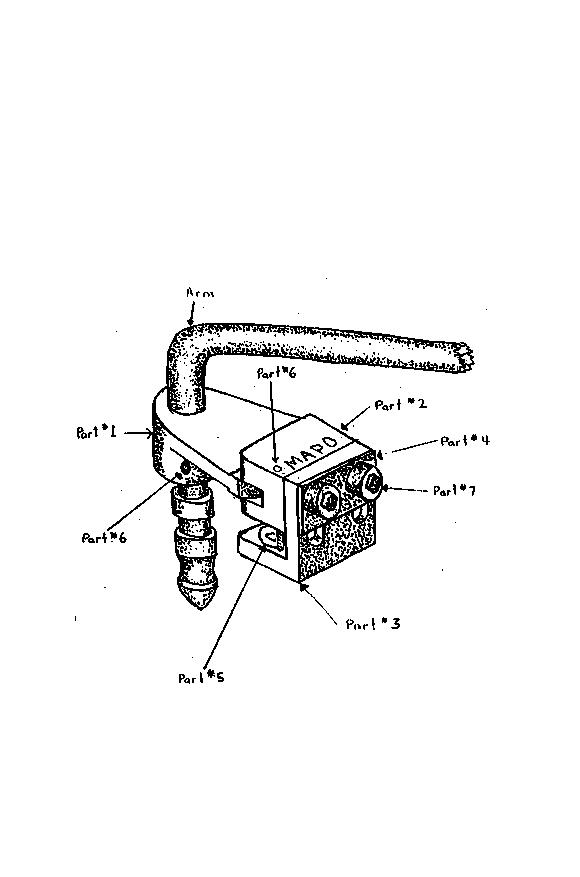Une partie des informations de ce site Web a été fournie par des sources externes. Le gouvernement du Canada n'assume aucune responsabilité concernant la précision, l'actualité ou la fiabilité des informations fournies par les sources externes. Les utilisateurs qui désirent employer cette information devraient consulter directement la source des informations. Le contenu fourni par les sources externes n'est pas assujetti aux exigences sur les langues officielles, la protection des renseignements personnels et l'accessibilité.
L'apparition de différences dans le texte et l'image des Revendications et de l'Abrégé dépend du moment auquel le document est publié. Les textes des Revendications et de l'Abrégé sont affichés :
| (12) Brevet: | (11) CA 2016878 |
|---|---|
| (54) Titre français: | DISPOSITIF DE BLOCAGE DE CHEVALET |
| (54) Titre anglais: | BRIDGE LOCKER DEVICE |
| Statut: | Durée expirée - au-delà du délai suivant l'octroi |
| (51) Classification internationale des brevets (CIB): |
|
|---|---|
| (72) Inventeurs : |
|
| (73) Titulaires : |
|
| (71) Demandeurs : | |
| (74) Agent: | |
| (74) Co-agent: | |
| (45) Délivré: | 1992-06-30 |
| (22) Date de dépôt: | 1990-05-16 |
| (41) Mise à la disponibilité du public: | 1991-11-16 |
| Requête d'examen: | 1990-05-16 |
| Licence disponible: | S.O. |
| Cédé au domaine public: | S.O. |
| (25) Langue des documents déposés: | Anglais |
| Traité de coopération en matière de brevets (PCT): | Non |
|---|
| (30) Données de priorité de la demande: | S.O. |
|---|
ABSTRACT
The floating guitar bridge is a common mechanical device
attached to a guitars' strings and body which allows the guitar
player to raise or lower the pitch of the guitar strings. This
type of bridge is generally called a floating bridge because it is
not stable. In other words, the floating bridge has a tendency to
move while playing the guitar which can cause many problems. The
BRIDGE LOCKER is a guitar bridge locking mechanism which locks
floating type mechanical string bending guitar bridges thus
disabling the floating bridges' ability to move forwards or
backwards, thus making the bridge stable or locked in position.
the object of the BRIDGE LOCKER device is to allow the guitar
player to lock and un-lock the floating function of the floating
guitar bridge without hindering the guitarist's playing style.
the novelty of the BRIDGE LOCKER is that it locks the bridge to
the body of the guitar. Prior art relative to this subject matter
teaches a guitar having a bridge with locking mechanisms which
lock the strings to the bridge or the position of the tremolo arm.
Note : Les revendications sont présentées dans la langue officielle dans laquelle elles ont été soumises.
Note : Les descriptions sont présentées dans la langue officielle dans laquelle elles ont été soumises.

2024-08-01 : Dans le cadre de la transition vers les Brevets de nouvelle génération (BNG), la base de données sur les brevets canadiens (BDBC) contient désormais un Historique d'événement plus détaillé, qui reproduit le Journal des événements de notre nouvelle solution interne.
Veuillez noter que les événements débutant par « Inactive : » se réfèrent à des événements qui ne sont plus utilisés dans notre nouvelle solution interne.
Pour une meilleure compréhension de l'état de la demande ou brevet qui figure sur cette page, la rubrique Mise en garde , et les descriptions de Brevet , Historique d'événement , Taxes périodiques et Historique des paiements devraient être consultées.
| Description | Date |
|---|---|
| Inactive : CIB expirée | 2020-01-01 |
| Inactive : CIB expirée | 2020-01-01 |
| Inactive : Périmé (brevet - nouvelle loi) | 2010-05-16 |
| Inactive : CIB de MCD | 2006-03-11 |
| Exigences pour le changement d'adresse - jugé conforme | 2002-05-17 |
| Inactive : Lettre officielle | 2002-05-17 |
| Accordé par délivrance | 1992-06-30 |
| Demande publiée (accessible au public) | 1991-11-16 |
| Déclaration du statut de petite entité jugée conforme | 1991-08-26 |
| Exigences pour une requête d'examen - jugée conforme | 1990-05-16 |
| Toutes les exigences pour l'examen - jugée conforme | 1990-05-16 |
Il n'y a pas d'historique d'abandonnement
| Type de taxes | Anniversaire | Échéance | Date payée |
|---|---|---|---|
| TM (brevet, 8e anniv.) - petite | 1998-05-19 | 1998-05-12 | |
| TM (brevet, 9e anniv.) - petite | 1999-05-17 | 1999-05-10 | |
| TM (brevet, 10e anniv.) - petite | 2000-05-16 | 2000-03-28 | |
| TM (brevet, 11e anniv.) - petite | 2001-05-16 | 2001-05-07 | |
| TM (brevet, 12e anniv.) - petite | 2002-05-16 | 2002-04-28 | |
| TM (brevet, 13e anniv.) - petite | 2003-05-16 | 2003-03-24 | |
| TM (brevet, 14e anniv.) - petite | 2004-05-17 | 2004-03-30 | |
| TM (brevet, 15e anniv.) - petite | 2005-05-16 | 2005-05-04 | |
| TM (brevet, 16e anniv.) - petite | 2006-05-16 | 2006-04-27 | |
| TM (brevet, 17e anniv.) - petite | 2007-05-16 | 2007-05-03 | |
| TM (brevet, 18e anniv.) - petite | 2008-05-16 | 2008-05-05 | |
| TM (brevet, 19e anniv.) - petite | 2009-05-19 | 2009-05-05 |
Les titulaires actuels et antérieures au dossier sont affichés en ordre alphabétique.
| Titulaires actuels au dossier |
|---|
| MORENO PAGLIERO |
| ALBERT OWCHAR |
| Titulaires antérieures au dossier |
|---|
| S.O. |